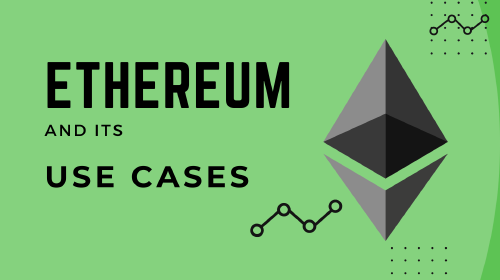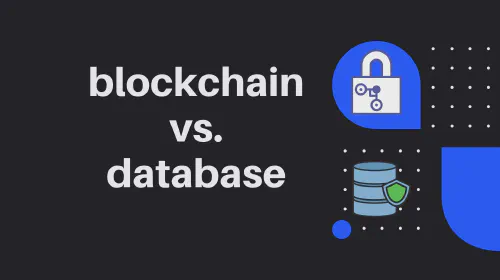Proof of Existence on Blockchain - The Complete Guide | OriginStamp
Salomon Kisters
Feb 12, 2021This post may contain affiliate links. If you use these links to buy something we may earn a commission. Thanks!
Ever since blockchain technology has gone mainstream, there is a plethora of discussion revolving around the “proofs”. For instance, if you have been following the industry for a couple of years, you must have heard the terms such as Proof of Authority, Proof of Stake, Proof of Work, and several others. Since blockchain technology is all about maintaining a non-repudiated log of actions, in this article, we will explore the concept of “Proof of Existence” in the light of blockchain.
What is Proof of Existence & What is its Significance?
As the name suggests, PoE is all about recording and proving that a certain data or entity exists (or existed). The way it works is also quite simple and gives more insight into the definition of PoE – basically, in order to maintain Proof of Existence for a digital entity, a timestamp and signature are associated with it to “prove” in front of the authorized viewers that a particular record was created on the mentioned date and time.
At OriginStamp, we also aim to resolve the IP protection issues by offering a blockchain-based solution. Currently, millions of files roam around the internet without carrying any stamp of authenticity and the time of creation that can be deemed truthful. Therefore, with our solution, artists and creative people can simply upload their files on the dashboard to get them timestamped. As a result, its entry will be recorded on the public ledger and can never be modified or deleted, thus ensuring that the proof of existence is maintained at all instances.
If you have never been involved in creating an IP, this discussion should spark a question in your mind – what is the significance of Proof of Existence? Well, the answer is very simple. It might not be crucial for an ordinary person who is doing a 9-5 job (and nothing creative or unique) that requires legal protection or research. However, if for example, you have an invention that needs refinement and you think it could get you a Nobel prize, you would definitely want to protect it from the “giants” in your niche.
This is where Proof of Existence comes into play. Just before you open your idea for discussion with a 3rd party, you can get it timestamped so everyone knows the origination point and time of the idea. Therefore, no one can ever steal your creative work or tamper with it. If they do so, they can be caught pretty easily.
You must have realized by now that the criticality of PoE is particularly important in public sector use cases where agencies and governments must be prepared to handle dispute resolutions in bulk. Moreover, since the urge for implementing cybersecurity and privacy are also growing at an incredible pace, this is the right time to pursue Proof of Existence on Blockchain – primarily, because the end-users do not have to trust a centralized authority for resolving their matters and the system can work in an automated manner upon triggers, without any human-dependency.
Salient Use Cases for PoE
Please note that apart from protecting Intellectual Properties, Proof of Existence can be used in many other scenarios as well.
Georgian Government
For instance, Georgia happens to be the pioneering country for implementing Proof of Existence in government dealings as they started utilizing the Bitcoin blockchain to save the hashes of their citizen’s land registry documents. Since the system is based on blockchain technology and operates on the Bitcoin network, which follows the P2P architecture to the core, the entire ecosystem is decentralized. Moreover, the probability of data leak, manipulation, and the establishment of a centralized control system is also eliminated.
As a result of this huge deployment, the hash number stored on the blockchain ledger acts as a unique identifier and allows the citizens to prove the existence of their documents. Since the documents are published on a non-editable ledger, they are always deemed to be valid and legitimate.
Due to the inherent feature of blockchain technology, the hash number will change even if a single character is appended or deleted from the document.
One of the greatest benefits of this ecosystem is that even if the databases or servers of the relevant agencies crash, the data will not be wiped off and the citizens can always access it via hash number from another node. The reason for this robustness belongs to the decentralized nature of the blockchain technology that gets rid of the problems caused by a “single point of failure”.
A Practical Example Explaining the Need of PoE in Real World
Haiti was hit by a destructive earthquake in 2010 and plenty of government facilities were wrecked. During this time, many buildings that were designed to store government and other legal documents were destroyed as well. As a result, the servers were also affected and the records of the land registry were deleted, thus there were several disputes concerning land ownership among the citizens and government.
This was no less than a nightmare for the Haitian government and they could have avoided this data-related catastrophe if they had applied a PoE model, such as the one adopted by Georgia.
Apart from allowing the owners to “prove” that they owned something at a specific date and time, it is also a futuristic and necessary step to keep the sensitive systems decentralized so the system can recover after getting hit.
Bloxberg
It happens to be an enterprise-grade blockchain that is run by a consortium of scientific organizations, working together to reach a consensus on the network. The purpose of this blockchain network is somewhat similar to what we discussed at the beginning of this article – protecting the IPs. However, the focus is much narrower and provides perfect feasibility for the protection of scientific work.
Contrary to its competitors, Bloxberg makes use of the PoA consensus mechanism to minimize the energy spent while reaching a decision and increases the throughput as well. Moreover, since the validators on the network are always “known”, the computational power can be further decreased, hence the network can scale more dynamically without affecting the security or throughput.
Since the quantity of research across the World has increased significantly in the last couple of years, particularly due to Covid-19, Bloxberg offers perfect feasibility to cater to the increasing demands.
Certify DApp
This DApp was developed on top of the Bloxberg blockchain and has gone into production. It targets a subset of the research industry and provides feasibility to prove and track the existence of gene research data (maintained in an arbitrary file). Likewise, all major blockchain solutions allowing the users to track PoE, Certify enables the end-users to verify the files, without disclosing the content.
Other than the SHA-256 hash, the timestamp also gets recorded in the metadata for public records and can be viewed by every authorized user. However, the content of the file cannot be read, whatsoever.
Signatura
It happens to be a particular tool for academic, legal, government, banking, and educational institutions, and the use case it addresses in regards to PoE is also quite practical. Basically, the members can sign documents and issue a variety of certificates on the blockchain.
The reason why it’s a bit different from mainstream digital signature providers is that it allows multiple users to sign a document, which is often required in academic certificates and legal documents. Therefore, the end product resembles quite closely a “multi-signature receipt”.
Conclusion
It is quite evident that blockchains are not only meant for financial use cases and in fact, due to their generic nature, they can be used in pretty much every scenario. It is also worth noticing that the PoE feature, initially offered by the Bitcoin blockchain, has not only enabled the developers and entrepreneurs to create further use cases on this technology, but we can also observe a plethora of consortium chains built on enterprise-grade blockchains.
The bull runs for cryptocurrencies have also escalated the popularity of blockchains and it is a decent gesture that governments have started adopting it. It would not only advance their operations but allow several other countries to take the lead as well and utilize the robustness of blockchain technology to provide better solutions for their citizen
Stay informed with the latest insights in Crypto, Blockchain, and Cyber-Security! Subscribe to our newsletter now to receive exclusive updates, expert analyses, and current developments directly to your inbox. Don't miss the opportunity to expand your knowledge and stay up-to-date.
Love what you're reading? Subscribe for top stories in Crypto, Blockchain, and Cyber-Security. Stay informed with exclusive updates.
Please note that the Content may have been generated with the Help of AI. The editorial content of OriginStamp AG does not constitute a recommendation for investment or purchase advice. In principle, an investment can also lead to a total loss. Therefore, please seek advice before making an investment decision.

Digital Signatures: The Digital Equivalent of Signing a Paper
Learn about digital signatures, the digital equivalent of signing a paper or putting a thumb impression, used for authenticity and security in the digital world.

Ethereum: Decentralized Blockchain Platform & Use Cases
Learn about Ethereum, a decentralized blockchain platform with smart contract functionality. Explore its use cases, how to buy Ether, and the benefits of OriginStamp.

Blockchain vs Database: Key Differences Explained
Understand the key differences between Blockchain and Database, from decentralization to security, in this detailed comparison.
Protect your documents
Your gateway to unforgeable data. Imprint the authenticity of your information with our blockchain timestamp